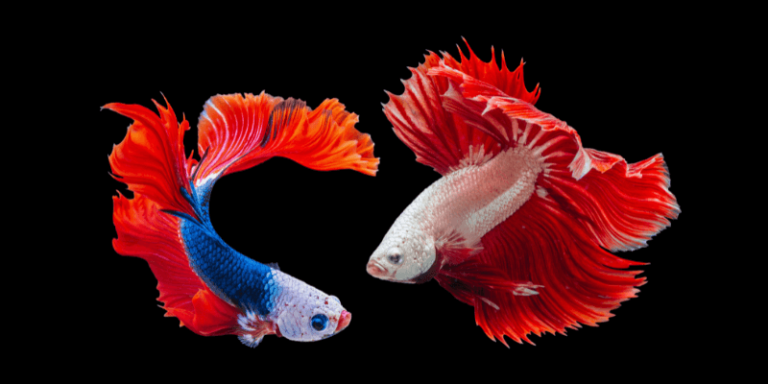10 tips for keeping a healthy aquarium
It feels fantastic to create a small environment with living things. After buying their first fish tank, a lot of people are hooked for life, and their pastime quickly grows to include larger aquariums, more aquariums, or both!
Unfortunately, it may also be a very difficult road for many fish keepers. To maintain your fish alive and healthy, it’s crucial to know which fish to buy, what basic maintenance to carry out, when, how much, and how frequently to feed, among other information. Maintaining a thriving aquarium can be difficult for novice aquarium keepers. A freshwater or saltwater aquarium needs the complete focus and effort of each owner to remain healthy. There are a few fundamentals you must understand if you want to take on the responsibility of aquarium maintenance.
Here are 10 essential advice for maintaining a beautiful and healthy aquarium, from pH level monitoring to water changes:
1. Prepare your water as needed
The characteristics of the water in your tank are essential for your fish’s long-term health. Keep in mind that tap water has a variety of qualities, including minerals that require balancing. If so, it won’t be strong enough to hold your pet fish and aquatic plants. Utilizing biological agents or supplements that remove these qualities is necessary to condition your water.
2. Get your fish used to the water

The process of acclimating your fish to its new environment is crucial. Since many fish species are fragile, the shock could occur if they are not properly acclimated. The finest acclimatisation techniques for your pet fish can be discussed with your pet counsellors. Before you start the process, they could suggest you examine the water’s chemistry. Be careful to test the water once you get home based on the proper chemical levels. You will need to give your fish a bit more time to adjust if your tank levels vary.
3. Place the fish on the surface of the bag
Additionally, you will need to adapt your fish to the aquarium’s water temperature. You must float your fish in their sealed bag for at least 15 to 20 minutes in order to complete this process. You must pour at least a quarter cup of aquarium water into the sealed bag per five minutes until it is full. Once you’ve finished, take part of the water out of the bag and submerge it in the water so your fish may swim about freely. The chemical and temperature of your aquarium are combined throughout this process, greatly simplifying the acclimation procedure.
4. Keep the levels of other chemicals and the pH in check
The balance between acidity and alkalinity in the water of your aquarium is measured by pH values. By acquiring a pH test kit, you can keep track of the pH values in your tank. In general, freshwater fish thrive in aquariums with pH values between 6.6 and 6.8. Fish in saltwater do best when the pH is between 7.6 and 8.4. Additionally, you must frequently check your tank to ensure that the nitrate, nitrite, and ammonia levels are appropriate. Of course, the types of fish you have and the type of aquarium you own have a big impact on these levels. Ask your pet counsellors for guidance on preserving pH balance and other levels for the best outcomes.
5. Make sure the water is at the proper temperature
The water in your tank needs to be warm enough to support aquatic life. Your fish may die if there are any significant temperature variations in the tank. Do not place your tank close to cooling vents or in a location that gets a lot of sunlight. A steady water temperature of 72°F to 82°F is required for freshwater fish, while 75°F to 80°F is ideal for saltwater fish. Research is essential to provide the best outcomes because temperature levels vary depending on the species of fish. If your aquarium is too cool to keep your fish healthy, you might need to get water warmer for your tank.
6. Regularly change the water
Changing 25% of the water in your aquarium once a month keeps the tank clean and keeps nitrate levels stable. You also remove more waste and debris that high phosphate levels have left behind. Your fish will experience additional stress if these levels are left high, which could severely affect them. Your fish and other aquatic life can remain robust and healthy with consistent water temps.
7. Tidy up the structure
A little bit of green in your tank is normally nothing to worry about, but too much of it might be harmful. Your tank will appear murky and marshy due to an algae buildup, which also lowers the water’s oxygen level. The fish and aquatic plants in your aquarium can get lost as a result. Like with any other animal, cleanliness is ideal. For the stabilisation of nitrate concentrations, it is crucial to keep the tank clean and to remove and replace at least some of the tank’s water each month. Cleaning also help to maintain waste levels and phosphate levels. Fish can develop illness in poorly kept tanks, so keeping them clean involves checking that the filters, lights, and other equipment are functioning properly every day.
8. Choose the appropriate tank size
Although it may be tempting to have many pet fish, it’s not necessarily a good idea to overcrowd your tank. Low oxygen levels brought on by overcrowding can make your fish more susceptible to disease. Additionally, it may result in a lot of waste, debris, and mortality, all of which might lower the water’s quality.
The price to buy a fish tank increases with its size. However, the residents of the tank must have access to a free area where they can exercise. In a small tank, overcrowding can result in too much waste, which can cause an oxygen shortage and an increase in disease vulnerability, both of which can result in an increase in fatalities.
9. Pick fish that go well together
When it’s time to buy fish, spend some time researching what you’re getting. Recognise the fish’s potential size, temperament, space needs, and compatibility with other fish. To buy fish at the pet store based solely on appearance is a beginner’s error. Although the pet store employee should be able to clarify things for you, however, they frequently lack the necessary expertise. Without your knowledge, you could acquire fish that are incompatible or fish that are aggressive.
In some habitats, a variety of fish species can live together. Fish species often don’t interact with one another as long as they have enough room, food, and other necessities. However, some fish species have the propensity to be fiercely protective of their homes or violent toward intruders. We advise looking at fish that can coexist happily because of this.
10. Don’t feed your fish excessively.
This is a fundamental guideline for keeping an aquarium. In addition to other issues, overfeeding your fish will increase the waste and debris in your tank. Most fish can thrive without being fed a lot of food. Overfeeding can promote the growth of algae, thus lowering the oxygen and quality of your water. Keep a regular feeding schedule and give the right amount of food. You can be rest assured that starving a fish is exceedingly difficult. It’s sufficient to feed your fish once a day, making sure to supply food for each species in your tank.
The majority of demands are met by excellent flake food, but if you have several bottom feeders, you may want to add sinking pellets. Don’t assume that flakes that float to the bottom of the tank will provide catfish and other scavengers with what they need. Algae wafers should be added to your tank if you have fish that consume algae as a supplement to their diet.
Feed only as much as the fish will consume in a few minutes. In addition to being harmful to the fish and perhaps causing sickness, too much food also contaminates the tank and may result in an increase in the aforementioned pollutants. Additionally, it may contribute to unwanted events like an excessive algae bloom or a snail invasion.
Bottomline
You will undoubtedly have a stunning aquarium filled with thriving aquatic life if you put enough training and work into it. So, as you can see, maintaining a healthy aquarium involves a lot of different factors. Although it may appear intimidating after you have some expertise and understand how the aquarium environment functions, it is actually not that tough. Overall, keeping an aquarium healthy requires routine upkeep.
While maintaining a tank and its occupants’ cleanliness and beauty requires a lot of work, the rewards include tranquilly and tranquillity. The minimal monthly work is well worth cleaning because tanks are for the occupants and the owner’s mental rest. A fish tank’s inhabitants stay healthy and happy when it is kept clean in addition to looking attractive. Always remember to keep a fish tank that is safe and healthy.




